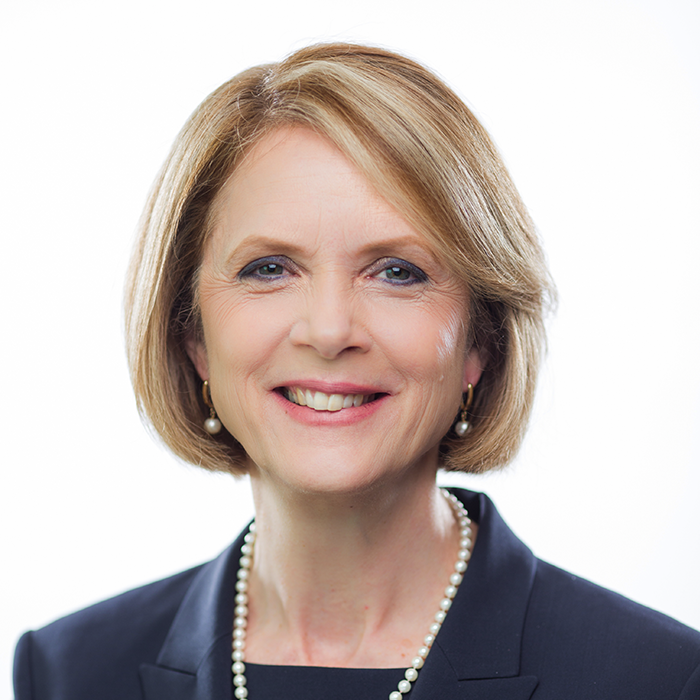
In late April 2023, Helena Gottschling was elected Board Chair for JDRF Canada.
Helena Gottschling is a purpose-driven leader who enjoyed a 37-year career with RBC before retiring in 2022. As Chief Human Resources Officer (CHRO) from 2017-2022, Helena was a member of Group Executive who set the overall strategic direction of RBC, Canada’s biggest bank and one of the largest in the world based on market capitalization. Helena was named one of Canada’s Most Powerful Women in 2021 by the Women’s Executive Network in the C-Suite Executives award category.
Her distinguished career encompassed senior roles in Retail Banking, Human Resources and National Office, and she has expertise in talent strategy, performance enablement, leadership development, cultural change and enterprise transformation.
Helena built her reputation as a trusted advisor, a change champion, and a devoted employee advocate by unlocking the potential of employees and strengthening RBC’s position as a top employer of choice on a global scale. She has been responsible for many transformational initiatives impacting 86,000+ employees, including the future of work strategy, COVID-19 response, diversity & inclusion strategy, and reimagining the HR function.
She is also a board member of Plan International Canada.
Helena is married with one son and lives in Kelowna, British Columbia, Canada. Her son lives with type 1 diabetes (T1D).
Helena recently sat down with JDRF Canada to talk about what brought her to the organization and what she hopes to achieve as Board Chair.
JDRF – Tell us a bit about your personal story about your son’s diagnosis.
We moved to Calgary from Vancouver in late spring 2002. At the time, Matt was 9 years old, and we were all adjusting to our new life in Alberta. We were enjoying our first winter skiing most weekends in the beautiful Rocky Mountains.
In February of that year, we noticed Matt was experiencing unusual symptoms and behaving in ways that weren’t like him. That’s when he was diagnosed with type 1 diabetes. Nobody in our extended family had T1D so we had a lot to learn along the way.
Matt received excellent care at the Children’s Hospital in Calgary and again in Toronto when we moved there in 2004. Our son never lets diabetes get in the way of his life! He skied, played rep soccer, then rugby at school and university.
And when he was able to access an insulin pump and continuous glucose monitor (CGM) it helped him better manage his diabetes and of course gave him more flexibility and independence. Which is why JDRF advocates and supports patient choice and universal access to these lifesaving devices.
JDRF – What progress have you seen during your time as a board member?
When Matt was first diagnosed 20 years ago, I got involved with JDRF through the ‘Ride for a Cure’. It was in Calgary, and I still remember the first year. I think there were two stationary bikes going! It’s incredible how much the event has grown since then and how things have changed!
At that time, we managed his T1D through injections with fast acting and long-acting insulin – testing his blood glucose levels multiple times a day, recording it manually in his workbook and calculating the amount of insulin he would need based on his food intake and exercise.
Since then – and just within the last twenty years – the progress made to help people with T1D manage their diabetes more effectively has been amazing. First with the pump – which helped him stay in range while offering more ‘just in time’ mgmt.
Then came the CGM – as a parent, the CGM gave me some peace of mind. Especially when our son left home to go to university and then live on his own. Knowing that an ‘alarm’ would alert him when he was too low or high (blood glucose levels) so that he could make adjustments (either with more insulin or eating something with sugar), helped me sleep at night.
And the progress made towards finding a cure is so encouraging – research projects from stem cell research to islet transplantations in countries around the world gives me so much hope as a parent with a son with T1D, and as someone involved with JDRF who is helping us get there.
JDRF – what do you hope to see/achieve as Board Chair?
My ultimate hope of course is that a cure is found for T1D – a world without type 1 diabetes! Until that time, I want to help ensure that JDRF Canada continues to fund research projects towards this goal and continue our advocacy work for those living with T1D through Access for All – ensuring equitable access to insulin, diabetes devices, the Disability Tax Credit and government funding for more research.
Our immediate goal is to complete our $100M Campaign to Accelerate fundraising campaign in celebration of the 100-year anniversary of the discovery of insulin – to date, we’ve raised over $70 million of our goal of $100 million. The support we’ve received has been absolutely inspiring.
We need to continue to communicate the impact we’ve made to our donors and supporters – dollars to research and most importantly, the outcomes of the research projects we fund. We will also continue to improve our funds to mission, making sure that the funds we raise go to the most promising research both into cures, which accounts for approximately 70% of funding disbursement, and into improving lives for people with T1D today, including our increased focus on mental health.
We also must continue to collaborate with partners along the way – the JDRF affiliates but particularly JDRFI in the United States, all levels of government, academia and other charitable orgs like Diabetes Canada and Brain Canada who support a shared mission and vision.
We need to continue to evolve our culture at JDRF so that employees, volunteers and supporters experience and feel the impact we’re making, because they all contribute through their work each and every day.
And as Chair of the Board, to work with the Senior Leadership team and Board Directors to ensure we deliver on our strategy, our mission, and our promise as an organization to our donors, supporters, staff and all Canadians affected by T1D, as we work towards a world free from type 1 diabetes.




